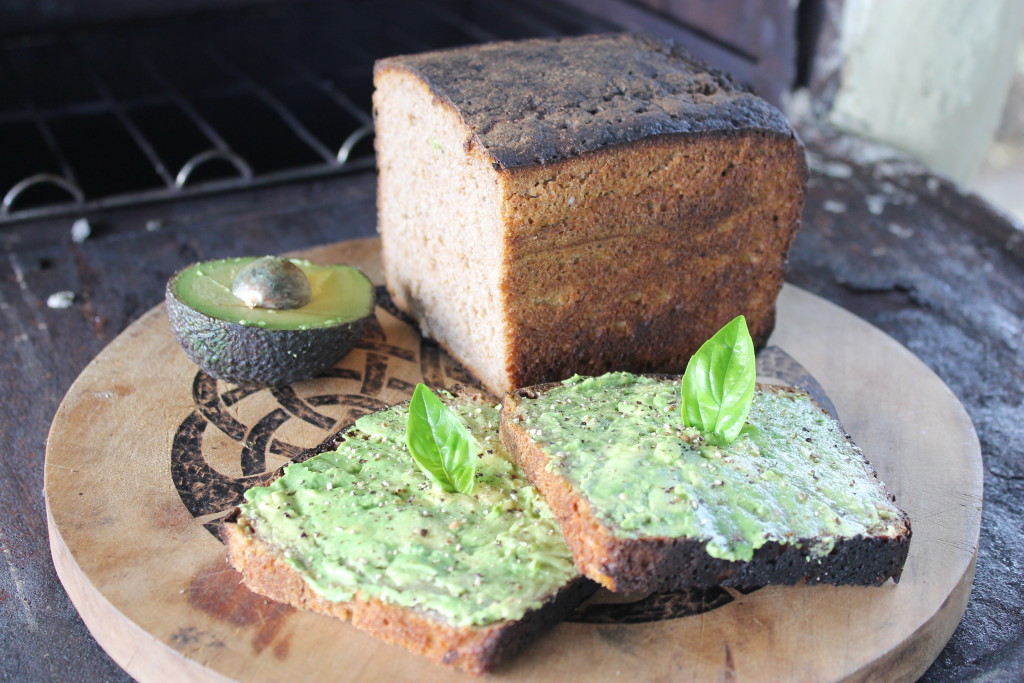How to Make a Sour Dough Starter & Rye Bread
A few of us went on a bit of a sour dough craze here at the village after Leòn taught us how to make it. Always trust a German when it comes to bread making! We’ve had quite a few requests for the recipe to go with this photo we posted on Facebook last month so we’re sharing the tasty goodness around! It’s really important to us here at the village to ferment all our grains before consuming them. The sour dough process is a fermentation process and by soaking the flour in water the phytates and enzyme inhibitors that exist in the rye (and all grains and seeds) can be released. This is mimicking nature (ie. the crops of birds) and neutralises the toxins/anti nutrients present in the phytates and enzyme inhibitors. Sourdough or fermented bread allows us to absorb more nutrients from the rye and makes the minerals more available while been much easier on our digestion systems. We generally try not to have bread all the time, but when we do this is one of our favourites!
MAKE A STARTER
Day 1: Mix 1 Tbsp Rye flour + 1 Tbsp Water
Day 2: Add 2 Tbsp Rye flour + 2Tbsp Water (Double the amount)
Day 3: Add 4 Tbsp Rye Flour + 4Tbsp Water (Double the amount again)
In a bowl, cover with moist cloth, make sure it doesn’t dry out. It can be left somewhere that is fairly warm but not in direct sunlight with ideally a good airflow. Now if starter has the sour like smell, good to go, if not keep doubling.
BAKING BREAD (MAKES TWO LOAVES)
Step 1: Starter + 2 cups Rye Flour + 1 cup cool water (Ratio 2:1(if you wish to makes greater quantities)) Let rise for 24 hours at room temp covered with moist cloth.
STEP 2: Step 1 + 5 cups Rye flour + 5 cups warmish water (Ratio 1:1) Keep warm minimum 6-10 hours covered with a moist cloth
TAKE A STARTER OUT NOW !!!
This is such an important step so don’t forget it! Around 5 Tbsp should be just about the right amount. Place it in a jar so you have your starter already prepared for the next batch of bread making.
STEP 3: Step 2 + 5cups of flour of your preference. Add salt to your taste (I normally add approximately 30g/500g flour used) and seeds too if you are adding them but remember they will need soaking first to remove their anti-nutrients and enzyme inhibitors.
Check to see if it is too sticky. This can be done by kneading the dough for a few minutes then using the flat of the hand to touch the dough. If it feels sticky then add a little more flour but if it is too dry then add a little more water.
Butter the trays and fill them halfway. Let rise until they have doubled in size
Bake at 150 Celsius – 250 Celsius for about 30-60 minutes. ENJOY!


No comments yet.